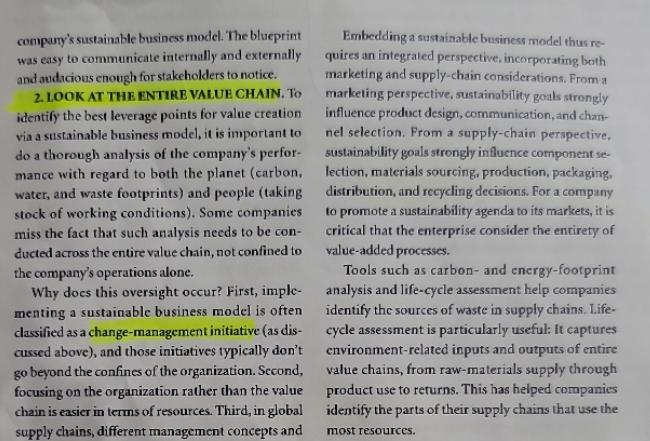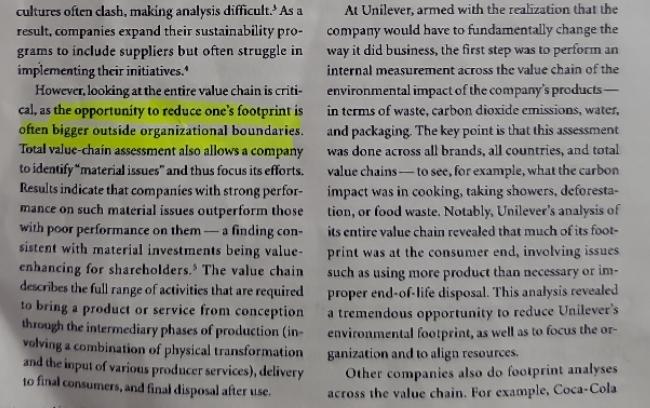Answered step by step
Verified Expert Solution
Question
1 Approved Answer
How the value chain is an obstacle facing achieving positive sustainability outcomes and what a leader of a company should do to overcome that problem.
How the value chain is an obstacle facing achieving positive sustainability outcomes and what a leader of a company should do to overcome that problem. ( it has to be related to the given information)


company's sustainable business model. The blueprint was easy to communicate internally and externally and audacious enough for stakeholders to notice. 2. LOOK AT THE ENTIRE VALUE CHAIN. To identify the best leverage points for value creation via a sustainable business model, it is important to do a thorough analysis of the company's perfor- mance with regard to both the planet (carbon, water, and waste footprints) and people (taking stock of working conditions). Some companies. miss the fact that such analysis needs to be con- ducted across the entire value chain, not confined to the company's operations alone. Why does this oversight occur? First, imple- menting a sustainable business model is often classified as a change-management initiative (as dis- cussed above), and those initiatives typically don't go beyond the confines of the organization. Second, focusing on the organization rather than the value chain is easier in terms of resources. Third, in global supply chains, different management concepts and Embedding a sustainable business model thus re- quires an integrated perspective, incorporating both marketing and supply-chain considerations. From a marketing perspective, sustainability goals strongly influence product design, communication, and chan- nel selection. From a supply-chain perspective. sustainability goals strongly influence component se- lection, materials sourcing, production, packaging, distribution, and recycling decisions. For a company to promote a sustainability agenda to its markets, it is critical that the enterprise consider the entirety of value-added processes. Tools such as carbon- and energy-footprint analysis and life-cycle assessment help companies identify the sources of waste in supply chains. Life- cycle assessment is particularly useful: It captures environment-related inputs and outputs of entire value chains, from raw-materials supply through product use to returns. This has helped companies identify the parts of their supply chains that use the most resources.
Step by Step Solution
There are 3 Steps involved in it
Step: 1
The value chain can present obstacles to achieving positive sustainability outcomes due to several factors outlined in the provided information 1 Limi...
Get Instant Access to Expert-Tailored Solutions
See step-by-step solutions with expert insights and AI powered tools for academic success
Step: 2

Step: 3

Ace Your Homework with AI
Get the answers you need in no time with our AI-driven, step-by-step assistance
Get Started


